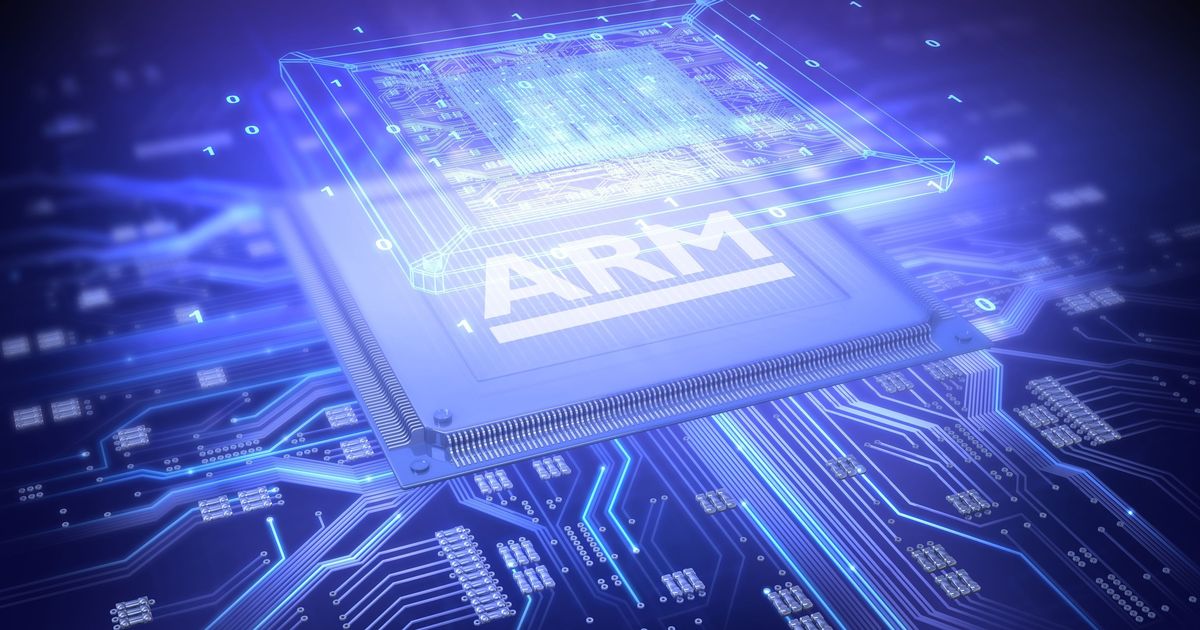 INFRA
INFRA
 INFRA
INFRA
 INFRA
INFRA
Smartphone chip designer Arm Ltd. is looking to change the way it charges for customers to use its intellectual property, as it seeks to increase its revenue and profitability ahead of an initial public offering that’s set to take place later this year.
The U.K.-based firm, which sells blueprints for the semiconductors that power more than 95% of the world’s smartphones, has informed a number of its biggest customers that it’s planning some big changes to its business model.
The Financial Times, which first reported the news, cited several industry executives and former Arm employees as saying that the company will begin charging device makers for its chip designs, with fees based on the value of the device sold.
At present, Arm licenses its chip designs to the chipmaking firms that use them as the basis of their own semiconductors. Arm charges a fee to chipmakers for obtaining its blueprints, then adds a recurring royalty for each chip that’s shipped, based on its price. Under the proposed new business model, Arm would set royalties based on the average selling price of the mobile device its chips are used in, rather than the ASP of the actual chip. According to the report, the changes would mostly affect Arm’s Cortex-A designs that are used to develop smartphone processors.
The Financial Times said that under the new business model, Arm stands to make several times more for each design sold, as the average smartphone costs much more than the chip itself.
The proposed model comes at a time when SoftBank Group Corp.’s chief executive Masayoshi Son is desperately trying to increase Arm’s profits in order to attract investors ahead of the company’s IPO. SoftBank acquired Arm for $31 billion back in 2016, and will retain a majority stake in the company after it returns to the public markets. According to the Financial Times, it’s hoping to push through the changes to its business model by early next year, but has seen some pushback from customers.
It’s said that customers including Qualcomm Inc., MediaTek Inc., Unisoc Ltd., Xiaomi Corp. and Guangdong Oppo Mobile Telecommunications Corp., Ltd. have all been informed of the proposed change to Arm’s licensing model.
Charging based on the cost of a device is a widespread practice in the telecommunications industry, with Qualcomm, Nokia Corp., and Telefonaktiebolaget LM Ericsson all using a similar model for their patents. However, Arm’s problem is that it’s trying to adapt its business model more than a decade after establishing the existing one. Still, though the customers may not like the proposed changes, one former Arm employee told the Financial Times it’s unlikely they’ll be able to do much about it.
“Arm is going to customers and saying ‘We would like to get paid more money for broadly the same thing,'” the ex-employee said. “What SoftBank is doing at the moment is testing the market value of the monopoly that Arm has.”
Charles King of Pund-IT Inc. told SiliconANGLE that Arm likely thinks that because it runs the only bar in town, it can price its drinks however it likes. But he said by going down this route, it could inspire some of its customers to look at other options. “The conventional wisdom holds that Arm is bulletproof from such attacks due to its dominance in smartphone and other mobile devices,” King said. “That’s certainly been true in the past but depending on how the new pricing structure is set up, it could inspire some vendors to seek or funds other alternatives.”
“Arm will likely pull this off given its dominant position in the smartphone market,” said Holger Mueller of Constellation Research Inc. “But by doing so it will also open the door for emerging rivals, so it could backfire in the longer run.”
Although Arm dominates the smartphone market, it is not the only option for device makers. By increasing the costs for its customers, Arm may spark more interest in the open-source RISC-V architecture that was conceived in 2010 by academics at the University of California at Berkeley as a royalty-free alternative. Already, a number of chip startups have began shipping silicon based on RISC-V designs, including Ventana Micro Systems Inc. and SiFive Inc., though for now their offerings are more focused on data center workloads.
“RISC-V has been pulling in developers firmly,” said Rob Enderle, an analyst with Enderle Group. “Another problem is that Arm’s move will be a red flag to the FTC and the European Commission, which may see it as an abuse of monopoly power. If that happens, Arm could be slapped with significant fines and other punitive penalties. Companies often make some terrible decisions when they are desperate for money, and this looks like a case in point.”
Not all of Arm’s customers would be affected by the changes. For instance, Apple Inc. has made its own licensing and royalty agreements with Arm.
Last year, Son revealed he was stepping back from the day-to-day operations at SoftBank in order to focus on growing Arm. It’s said that he believes Arm could be much more profitable given the critical and ubiquitous nature of its chip designs in the smartphone industry. Indeed, while its revenue increased by 20% from 2015 to 2019, its profit fell almost 70% in the same period, the Financial Times reported.
Arm’s fortunes have improved somewhat since then, but there remains a lot of ambiguity about the company’s true value ahead of its IPO, with valuations ranging from $30 billion to $70 billion. The uncertainty over the company’s value is said to stem from a lack of clarity over its long term growth strategy, and the fact that it has no direct rivals it can be compared with.
THANK YOU